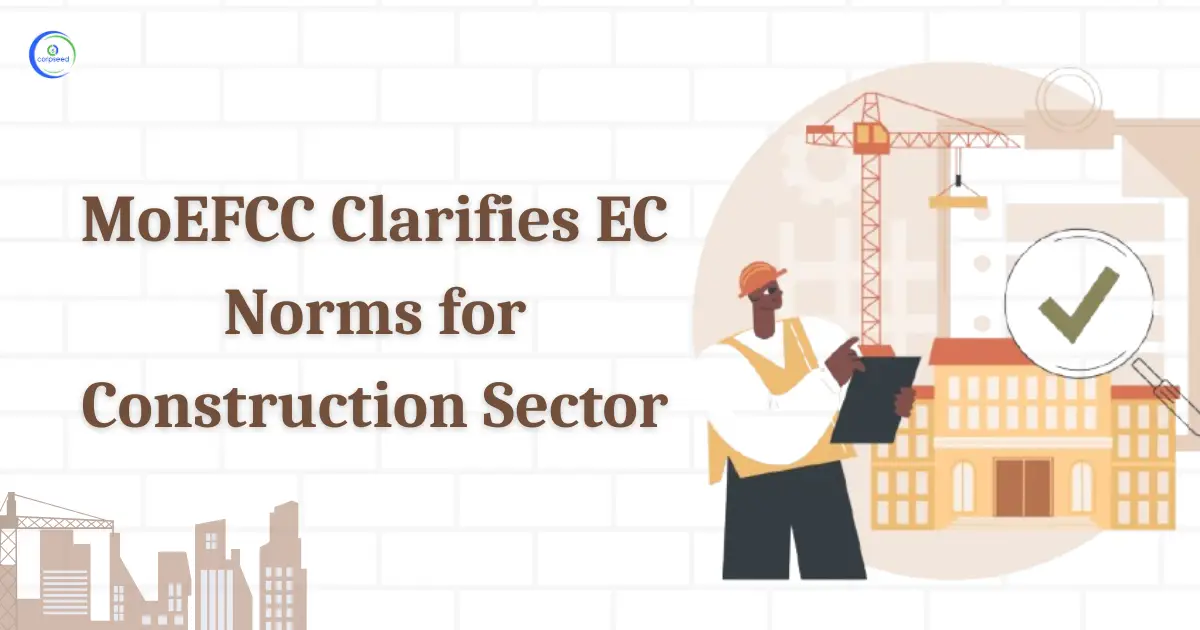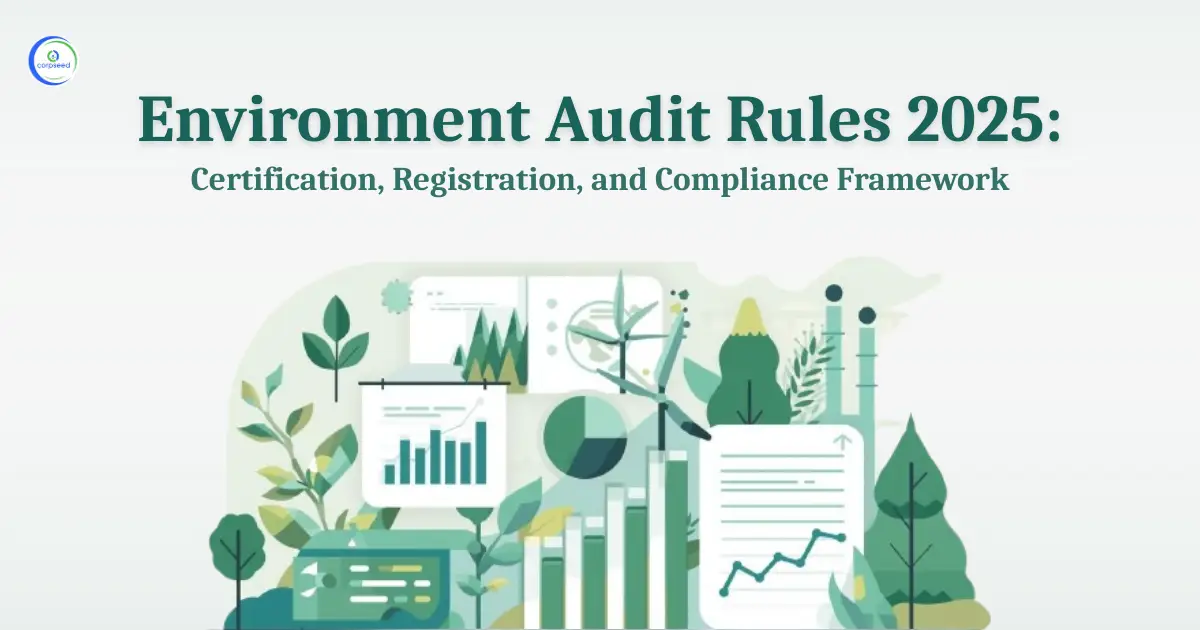Introduction of Environmental Impact Assessment Act
Environment Impact Assessment is a process that analyses and evaluates development projects on environmental components. Their environmental viability is tested before they are given approval by the regulating authority. It plays a crucial role in stopping unethical projects that do not comply with environmental rules and regulations and pose a threat to the natural environment. The screening of development projects on this front only allows the projects that use sustainable means of development and do not affect the environment over the permissible limits. The state and union territory governments have EIA authorities to issue prior environmental clearance and prior environmental permission.
Table of Contents
--------------Blog Contact Form-------------
History of Environmental Impact Assessment (EIA)
Environment Impact Assessment in India has a long history in India. The concept of environmental impact Assessment finds its roots in the National Environment Protection Act of the United States often referred to as NEPA. It was introduced in 1970. India, in 1976 prescribed the assessment for some river valley projects. It was the time for the inception of Environmental Assessment in India but there was a lack of sufficient regulatory framework about the same. Later in 1986, the Environment Protection Act was introduced which had provisions prescribing the government to make rules and regulations for the protection of natural environment, habitat, climate and resources. The act also prescribed to restrict the activities that harm the environment in any manner.
To implement the restrictions on development projects and activities, the government issued a notification in 1994 called the EIA notification. This notification provided the guidelines for the issuance of an Environmental Clearance Certificate. This condition of obtaining an Environmental Clearance Certificate was made compulsory for the modernization or expansion projects and the same were listed in an attached schedule. This was the first time we got any specific legal document for the environmental clearance or the environmental impact assessment.
Read Our Blog: Environmental Impact Assessment in India
Developments in the EIA Framework in India
After the notification of 1994, more enhancements were required to adapt the process according to the contemporary needs of the nation. Later in 2006, another notification came which had more elaborated procedures for the assessment of the project and other development activities including the modernization projects and expansion work. The responsibility, according to the EIA notification of 2006, was put on the state government and the union territories for the issuance of Environmental Clearance Certificates as per the size, capacity and project’s potential to harm the environment. The draft notification of 2020 comes into the scenario after 14 years of EIA 2006 notification. It further makes the process more efficient, transparent and standardized. The notification adds various new additions to the procedure of Environmental Impact Assessment to make it more suited to contemporary needs.
Read Our Blog: Importance of Environmental Impact Assessment in India
Key Features of the Environmental Impact Assessment Act 2020
The Environmental Impact Assessment notification comes with various significant provisions. The key features of the Environmental Impact Assessment Act are as follows-
- EIA 2020 is rooted in the Environment Protection Act, which empowers the government to create rules and regulations to protect the environment and restrict projects and activities that can harm it.
- EIA is a systematic process that involves analyzing a project's potential impact on the environment and preparing a detailed report for evaluation. On the basis of this report and the suggestions of the appraisal committee, the applicable authority makes decisions and approves the project.
- EIA 2020 categorizes projects into three categories- A, B1, and B2, based on their potential social and environmental impact and the extent to which they can harm the environment. The categorization assists the regulating authority as well as the project proponents in understanding the specific requirements for certain projects.
- Depending on the category, project proponents need to obtain either prior environment clearance or prior environment permission. It is decided whether the project is placed before the appraisal committee or not.
- EIA 2020 establishes authorities such as Expert Appraisal Committees, State Level Environment Impact Assessment Authorities (SEIAA), and Union Territory Environment Impact Assessment Authority (UTEIAA) to oversee the approval process. A technical expert committee assesses the environmental viability of projects by conducting site inspections.
- The EIA process involves several stages, including scoping, report drafting, public consultation, preparation of the final EIA report, and the preparation of an Environmental Management Plan (EMP).
- EIA 2020 encourages public participation through public consultations and hearings. It allows residents and stakeholders who reside in the vicinity of the project site or are affected by the project in any manner to voice their concerns and opinions.
- Regulatory authorities aim to make timely decisions on project approvals, and mechanisms are in place to address disagreements. Each and every process prescribed in the notification comes with a timeline and the matter has to be disposed of by the relevant department within that time period.
Read Our Blog: Key Proposals Of The Draft EIA Notification 2020
Benefits of EIA 2020 Notification
The Environment Impact Assessment Act 2020 was issued after various revisions and hence possesses various benefits for the project proponents as well as the authorities. It sets up authorities and prescribes their function to make the overall EIA process more effective. The major benefits of EIA 2020 are as follows-
- EIA, or Environmental Impact Assessment, helps to expedite and reduce the cost of construction projects. By conducting an EIA, the planning and building process becomes more efficient and economical.
- One of the key benefits of project management is its ability to protect the environment. By ensuring that all projects follow environmental laws and regulations, project managers help to maintain a safe and sustainable environment.
- The EIA plays a crucial role in balancing resource usage and protecting the environment by helping us use our resources wisely.
- Making informed decisions is crucial for any project. It involves understanding both the positive and negative aspects of the project, which enables decision-makers to evaluate the feasibility and potential outcomes of the project.
- Detecting problems early in project planning is crucial to ensure that they are resolved before they escalate. Early problem detection enables teams to identify potential issues with the environment and take appropriate measures to prevent them from causing significant disruptions later on.
- The Environmental Impact Assessment (EIA) process suggests solutions for addressing problems or minimizing their impact.
- Most projects requiring an EIA involve the public, allowing for public input prior to project commencement. The EIA framework benefits the affected people through the development projects.
Read Our Blog: What Are The Components Of Environmental Impact Assessment?
Conclusion
The implementation of EIA 2020 plays a vital role in safeguarding the environment, streamlining the development process and engaging the public. It not only saves time and money but also ensures compliance with environmental laws while promoting responsible resource usage. EIA 2020 helps in the early detection of issues, proposes sustainable solutions, and empowers communities to voice their opinions regarding development decisions. The authorities are able to evaluate the viability of the project based on comprehensive EIA reports. The Environmental Impact Assessment is the cornerstone for reliable development practices and a sustainable future.
Environment Impact Assessment
Environmental impact assessment is an instrument to evaluate the consequences of the establishment of a new project or expansion of projects related to industries, mining, pipelines, etc. Enjoy simple processing and no hidden fees.
Environmental Audit
An environmental audit is an important part of a company’s environmental policy and performance. It checks whether the company has complied with the environmental regulations and requirements, and achieved the environmental goals set by them.
Environmental Consulting
An environmental consultancy firm consists of a team of experts, who’re qualified in the studies of law, geology, environment, engineering, and have years of experience dealing with the aspects of regulations & norms associated with environmental laws.
This portion of the site is for informational purposes only. The content is not legal advice. The statements and opinions are the expression of author, not corpseed, and have not been evaluated by corpseed for accuracy, completeness, or changes in the law.
BOOK A FREE CONSULTATION
Get help from an experienced legal adviser. Schedule your consultation at a time that works for you and it's absolutely FREE.







_Corpseed.webp)
.webp)
